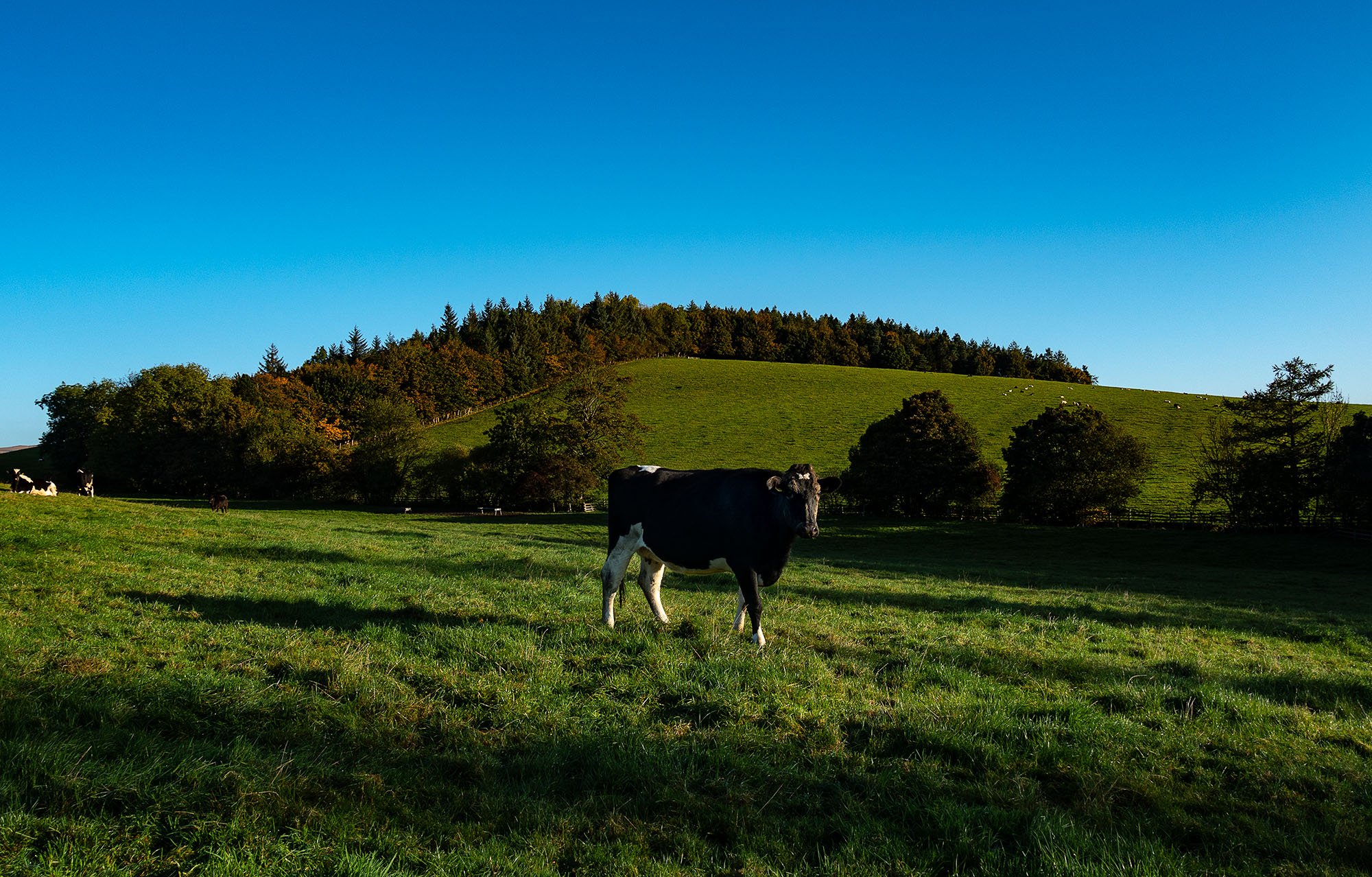Is carbon neutral beef a thing (Part I)
With beef and dairy occupying the extreme left of charts showing the carbon intensity of our different protein sources, carbon-neutral beef – which is physically and financially viable – could change how we think about the connection between pastoral farming and soil carbon. Matthew Phan explores whether there is room to alleviate guilt over his next burger.
Is carbon neutral beef physically possible?
Yes. Data from White Oak Pastures, a six-generation cattle farm in Bluffton, Georgia, in the US, shows that it is. In 2017, White Oak arranged a third-party Life Cycle Assessment by Quantis, an independent consultant, which showed its grass-fed beef had a negative carbon footprint, meaning that on net, the cattle helped sequester, rather than release, carbon.
How? The slide below, taken from the full presentation – published online – shows how. Enteric emissions, or methane emitted due to a cow’s digestive process, still accounted for 29 kg of CO2-equivalent emissions, per kilogram of meat. Emissions from manure account for another 5 kg. This is in fact higher than equivalent emissions at conventional grain-fed US farms. But White Oak’s techniques mean an improvement in soil carbon that sequesters 35 k of carbon per kilogram of meat, leading to a net -3.5 kg of carbon sequestered, versus 33 kg emitted under a conventional system.
There is enough on regenerative farming websites out there on how to use cattle to fertilize and graze pasture – moving the herd on at the right time, such that the manure serves as fertilizer while hooves and grazing churn the soil by an optimal amount – in a way that improves soil quality. Simply put, this increases soil organic matter, and as such matter can be 45% or more comprised of carbon, this increases soil carbon content. Other US experiments, such as this study from Michigan State University, generated similar results – excluding “soil carbon flux”, so called “adaptive multi-paddock grazing” generated 9.62 kg of CO2-equivalent per kilogram of carcass weight, compared to 6.09 kg on a conventional “feedlot” system, but including “soil carbon flux” of around 16 kg of carbon sequestration per kilogram of meat, the grazing system resulted in net carbon sinking of -6.65 kg per kilogram of meat.
Granted, there are nuances to the science. White Oak’s presentation notes that the carbon sequestered in soil could be re-emitted, or the rate of sequestration might slow as the soil gets “carbon saturated”, though it notes the starting point is from a very low level of organic carbon content, so this is not likely to happen for a decade. On the other hand, land productivity under the White Oak system will rise, leading to higher meat output, while that under a conventional system will deplete, requiring more chemical input.
There is also the complex question of whether biogenic methane contributes to global warming in the same way that fossil-fuel based carbon dioxide does. Embedded in this question are two issues: First, methane is considered 84x more warming than CO2 over a 20-year timeframe, but decomposes after around a decade, while CO2 persists for hundreds; on a 100-year time frame, methane is considered 28-36x more warming than CO2.
Second, methane from digestion is part of the biogenic cycle, a natural cycle via which carbon is absorbed by plants through photosynthesis and returned to the atmosphere by ruminants; in that sense, counting biogenic emissions is like measuring only one part of the overall flow of carbon in this system dynamic (more relevant for pasture-fed than grain-fed cattle, granted), in contrast, burning of fossil fuels is a one-directional release. Finally, there is also discussion of using feed-additives, anaerobic biogas digesters, and direct carbon capture, to reduce emissions from cows.
Clearly, raising livestock the conventional way has deeply negative impacts on carbon emissions. But we might be throwing out the baby with the bathwater if we ignore the positive contribution that a certain amount of livestock makes to soil health. As ever, seeing things in the round should prevent us from leaping to singular conclusions that ignore a systemic view.
In a future Insights post, Matthew will be exploring the topics of soil carbon and regenerative farming further.



